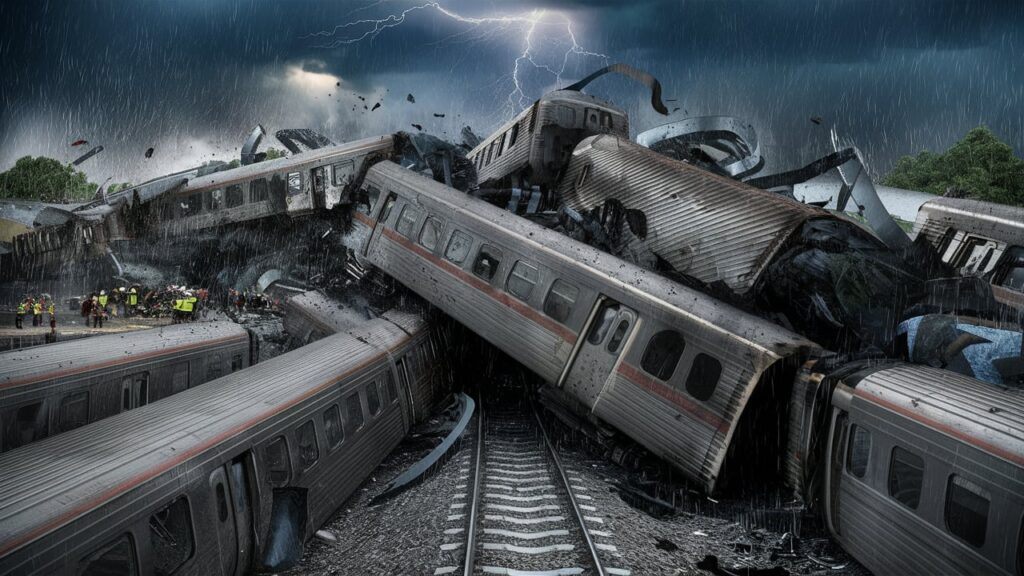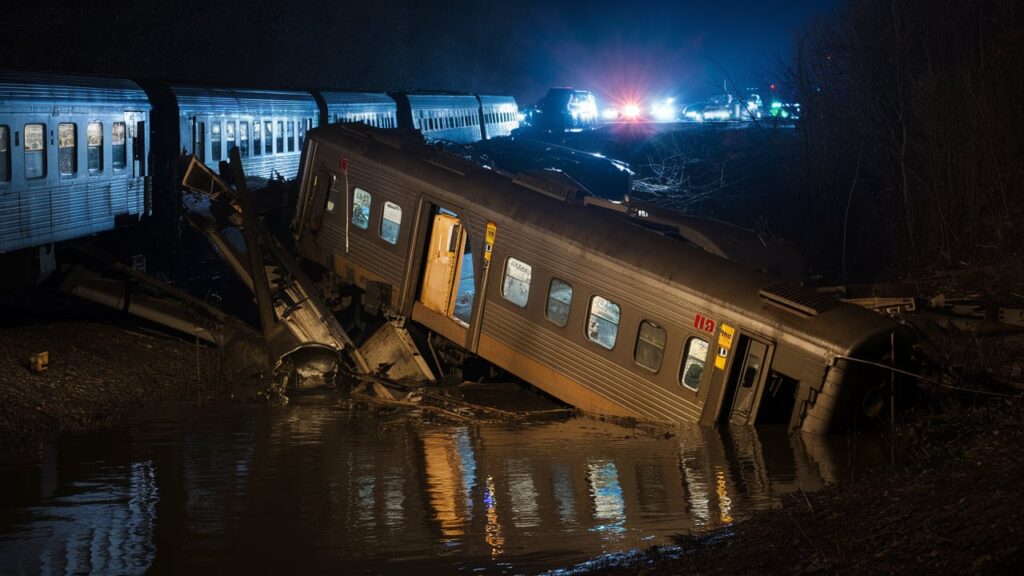LIRR derailment is a time period that describes an twist of fate wherein a educate at the Long Island Rail Road (LIRR) derails. Derailment may end result from some of causes which include mechanical breakdown, defects at the tracks, foreign objects at the music, or human mistakes.
Derailment might be a trivial accident that isn’t serious in any respect and effects in little interference and no harm, or it is able to be a chief twist of fate resulting in massive harm, injuries, or fatalities.
Related Post –
LIRR Train Derailment

Key features of an LIRR derailment are:
- Causes: Derailments may be as a result of track issues (which includes damaged rails or misaligned tracks), mechanical disasters of the educate (consisting of wheel or brake troubles), outside causes (such as gadgets or particles on the tracks), or operating mistakes (along with speeding up or signaling mistakes).
- Impact: The severity of a derailment may also vary from minor delays and interruptions in carrier to most important injuries with severe influences. The effect is determined by means of factors which includes velocity of the teach, number of passengers, region where the derailment occurred, and sort of the twist of fate.
- Response: In the case of a derailment, emergency responders, LIRR staff, and the respective authorities generally arrive to offer protection for the passengers, include the situation, and conduct an investigation into the reason. The reaction may additionally involve evacuating the passengers, administering medical care, and resuming regular service.
- Safety Precautions: The LIRR and different rail networks undertake protection precautions, such as periodic music inspections, preservation, and worker schooling, to avoid derailments. There are also procedures in region to address and control the effect of such accidents.
- Investigation: LIRR is fulfilled after a derailment to detect the purpose of the investigation and to avoid destiny events using LIRR, National Transportation Safety Board (NTSB), or other comparable agencies. Investigations usually cause security guidelines and upgrades.

LIRR Derailment at Atlantic Terminal
The LIRR derailment at Atlantic Terminal passed off on January 4, 2017. The incident was that of a educate overshooting the platform and colliding with a bumper block on the track’s give up.
- Date: January 4, 2017
- Time: Approximately 8:20 AM
- Train: The educate changed into an LIRR train coming in from the Hempstead Branch.
- Location: Atlantic Terminal, Brooklyn, New York.
- Circumstances: The educate changed into full of about 600 vacationers at the morning rush hour. As the educate became arriving at the terminal, it did no longer stop in time and collided with the bumper block at a slow pace.
- Casualties: Minor accidents were precipitated to approximately 103 team individuals and passengers.
- Damage: The station infrastructure and educate automobiles suffered damage.
- Investigation: An investigation turned into performed with the aid of the National Transportation Safety Board (NTSB), highlighting probably causes which includes mechanical failure, human mistake, or signal problems.
- Aftermath: Service turned into briefly interrupted after the event, and safety protocols were checked and enforced so one can keep away from such occasions from going on again.
LIRR Derailment at Far Rockaway
Far Rockaway, in Queens, has had distinctive occasions within the beyond. Nevertheless, detailed statistics regarding a prime derailment event right here isn’t thoroughly documented.
- Common factors in events: Possible causes of derailment on this region should include outside factors such as music conditions, signal problems, gadget failure, or weather conditions.
- Safety Measures: LIRR has ongoing conservation and safety protocols to ensure safe operation of trains in place.

LIRR Derailment at New Hyde Park
New Hyde Park LIRR derailment came about on October 8, 2016.
- Date: October 8, 2016
- Time: Approximately 9:08 PM
- Train: The train was a Port Jefferson Branch LIRR commuter educate.
- Location: New Hyde Park, Nassau County, New York.
- Circumstances: The derailment resulted when the train hit a protection teach that were left on the tracks. The impact derailed 3 teach vehicles.
- Casualties: There had been injuries to approximately 29 passengers and team members, with a few hospitalized.
- Damage: Extensive harm become finished to the educate automobiles and the renovation automobile. Track infrastructure was also damaged.
- Investigation: The NTSB investigated the accident, studying educate speeds, sign structures, and crew conduct.
- Aftermath: After the derailment, LIRR provider on the road in question was interrupted, and shuttle buses have been supplied. The accident ended in a evaluation of safety techniques and operational strategies.
LIRR Derailment at Penn Station
Penn Station has witnessed a number of derailment accidents, considered one of which occurred on March 24, 2017.
- Date: March 24, 2017
- Time: During the morning rush hour
- Train: An Amtrak Acela Express train.
- Location: Penn Station, Manhattan, New York City.
- Circumstances: Although no longer an immediate LIRR derailment, the coincidence concerned an Amtrak educate and had a full-size effect on LIRR operations. The Acela educate derailed because it turned into leaving Penn Station, destroying the tracks and infrastructure.
- Casualties: There had been no foremost injuries.
- Damage: There changed into huge damage to tracks and switches inside the derailment, which ended in tremendous service interruption for Amtrak, NJ Transit, and LIRR offerings.
- Investigation: The derailment induced an research by means of the NTSB and Amtrak. Problems in song protection and infrastructure have been diagnosed as elements contributing to the derailment.
- Aftermath: The derailed train created mass disruptions, with cancellations and delays impacting hundreds of passengers. Mass repair paintings became needed to resume everyday operations. The coincidence highlighted the need of improve paintings at Penn Station.
LIRR Train Derailment queens
On August three, 2023, a Long Island Rail Road (LIRR) educate derailed in Queens, close to Jamaica.
- Date of Incident: August 3, 2023
- Location: Queens, near Jamaica station
- Train Type: Hempstead Branch train
- Details: Eight automobiles derailed, developing large disruptions.
- Impact: Delays anticipated for the evening and probable the morning go back and forth day after today.
- Affected Stations: Bypassed Hollis and Queens Village stations.
- MTA Response: Informing passengers approximately delays, cancellations, and train consolidations.
- Additional Info: Eastbound trains have been diverted; commuters were subjected to track changes
